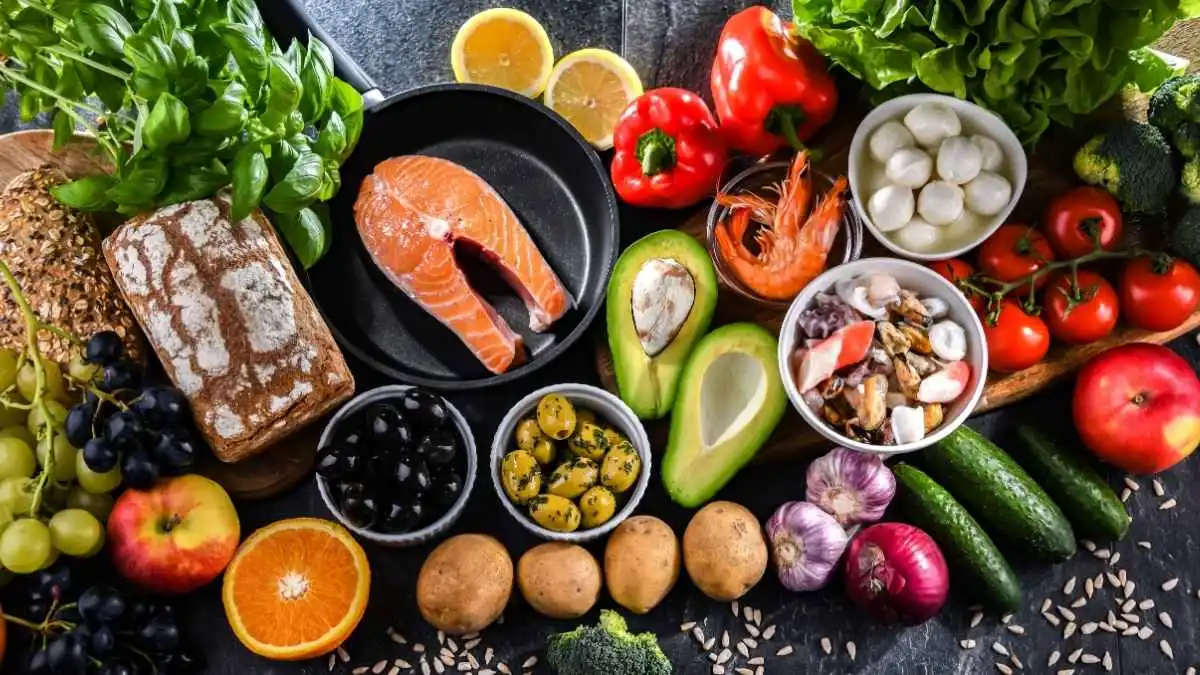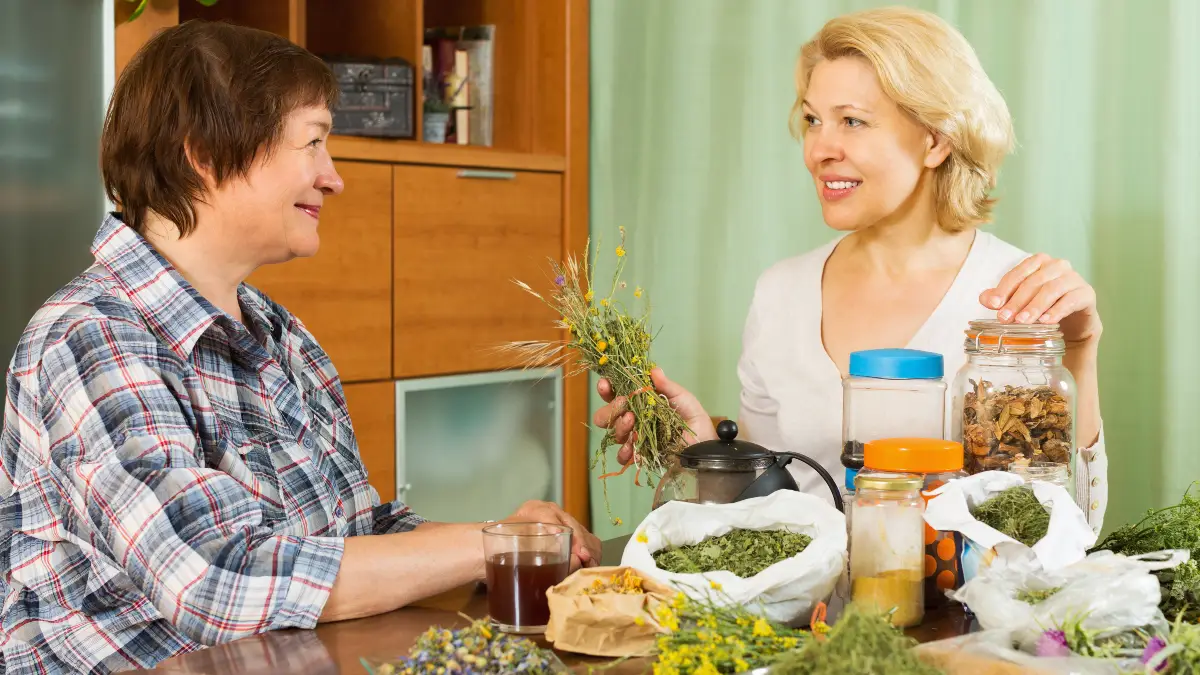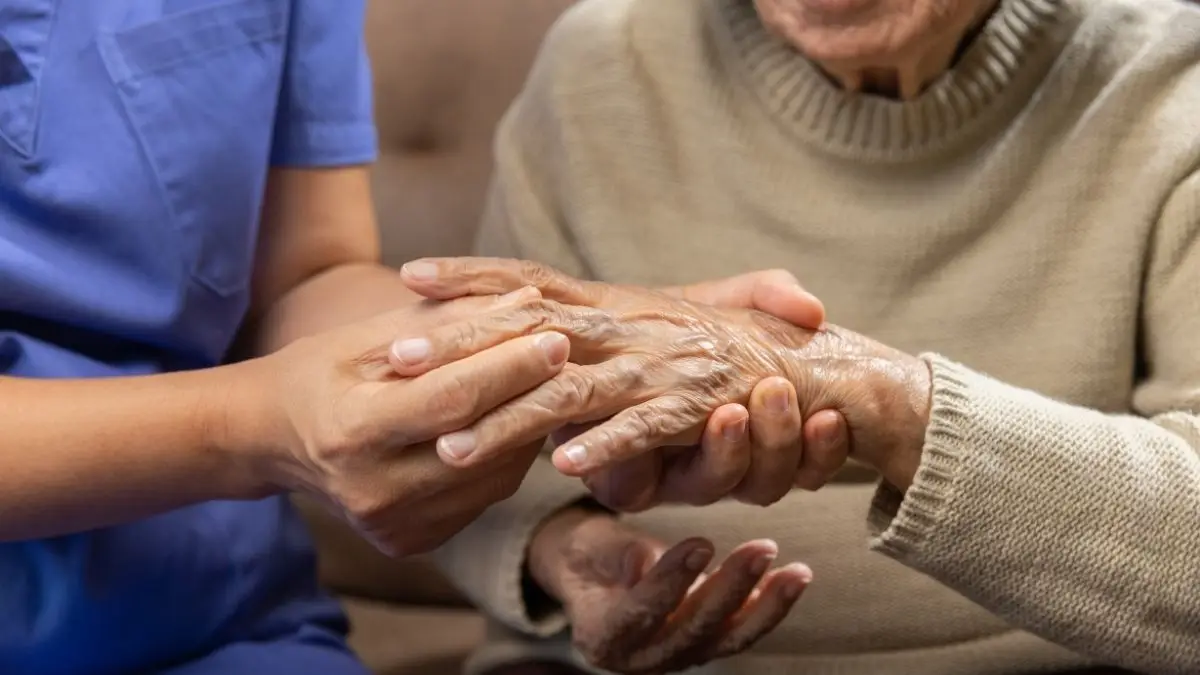That “40% less inflammation” statistic you see everywhere about Scandinavians? It’s completely wrong. It’s a catchy headline that sells a simple fix for a complex problem—the chronic aches and low energy that so many of us feel.
You have likely tried the supplements and diets that promise a quick solution, only to be disappointed. The truth is, people in Nordic countries deal with plenty of inflammatory diseases.
Their real secret isn’t a magic diet; it’s a powerful system for building resilience against life’s stresses. Forget the myths. Here’s the real story of how they stay so healthy, and how you can too.
Why the “40% Less Inflammation” Idea Is Wrong
The Scandinavian Paradox: Reality vs. Myth
“Scandinavians have 40% less inflammation”
This popular idea is not supported by health data.
Inflammatory Bowel Disease (IBD)
In Sweden, about 1% of the population lives with IBD, and Norway has one of the highest rates in the world.
Widespread Chronic Pain
Roughly 16% of people in Denmark and 18% in Sweden live with moderate to severe chronic pain, often linked to inflammation.
Rheumatoid Arthritis Risk
In Nordic countries, patients with RA are 80% more likely to suffer a serious heart event driven by inflammation.
The Real Question
The secret isn’t a lack of disease. The secret is resilience. We should ask: “How do they stay so healthy despite these issues?”
You’ve probably heard that people in Scandinavia have way less chronic inflammation. Some articles even claim it’s 40% less. This idea is popular because it makes you think there’s a simple secret. Maybe it’s a special diet that stops them from getting the diseases that are common everywhere else.
But here’s the truth: that idea is wrong.
When you look at the real health data from countries like Sweden, Denmark, and Norway, you see a different story. They don’t have less inflammation.
In fact, they deal with many of the same inflammatory and autoimmune diseases as the rest of the world. In some cases, their rates are even higher. This is the “Scandinavian Paradox.”
Let’s look at the facts from major health studies:
Rheumatoid Arthritis (RA): People with this inflammatory disease in Nordic countries are 80% more likely to have a serious heart event caused by inflammation than the general public. That shows a big inflammation problem.
Inflammatory Bowel Disease (IBD): In Sweden, about one out of every 100 people now lives with IBD, and the number is still growing. Norway has one of the highest rates of IBD in the world.
Microscopic Colitis: In southern Sweden, one type of this inflammatory gut problem has been increasing a lot. This suggests something in the environment is causing it.
Chronic Pain: A large number of people in Denmark (16%) and Sweden (18%) live with moderate to severe chronic pain, which is often tied to inflammation.
This evidence shows we’re asking the wrong question. We shouldn’t ask, “Why do Scandinavians have less inflammation?” We should ask, “Since they have plenty of inflammatory diseases, how do they stay so healthy and live so long?”
This report will show you the real answer. The secret isn’t a lack of disease. It’s a lifestyle and a society built to make people resilient. They have powerful ways to fight back against the damage inflammation can cause.
What Really Makes Scandinavians So Resilient

So, how do Scandinavians stay healthy even with high rates of inflammatory disease? It’s not just one thing. It’s a mix of their culture and how their society is set up. These things work together to fight the root causes of chronic inflammation.
Their resilience comes from three main pillars. First, a deep cultural need to be in nature. Second, a society that reduces stress through community and work-life balance. And third, a special focus on cozy, comfortable moments. Let’s break down how each one works.
How Going Outside Fights Sickness: The Power of ‘Friluftsliv’
A key part of Nordic life is a concept called friluftsliv (pronounced free-loofts-leev). This Norwegian term means “free-air life.” It’s not just about hiking or skiing. It’s a deep belief that spending time in nature is good for your mind and body.
This isn’t a hobby for a few people. It’s a core value for almost everyone. A 2023 survey found that over 88% of Norwegians spend time doing outdoor activities.
They go outside no matter their age or the weather. And now, science is proving that this habit has real, measurable effects on the body that help control inflammation.
How Being in Nature Changes Your Body
The power of friluftsliv works in a few ways. The most obvious one is stress reduction. Long-term stress is a major cause of inflammation because it keeps your stress hormone, cortisol, too high.
Spending time in nature is a direct fix for this. Studies show that walking in a forest can lower your blood pressure and cortisol levels. By making time in nature a regular habit, the Nordic lifestyle helps turn off a key trigger for inflammation.
But it goes deeper than just feeling calm. Research on the Japanese practice of “forest bathing,” which is very similar to friluftsliv, shows it boosts a special part of your immune system: your Natural Killer (NK) cells.
These are a type of white blood cell that acts like a security guard for your body. They find and destroy cells that are infected with viruses or have turned into tumor cells.
Studies found that after people spent time in a forest, the number and activity of their NK cells shot up. In some cases, their activity increased by 50% or more. And this boost isn’t temporary.
The effect can last for more than 30 days after just one trip. This means a monthly walk in the woods could keep your immune system on high alert. This happens because trees release natural chemicals called phytoncides. When you breathe them in, your body responds by making more of these helpful NK cells.
Most recently, a 2024 study made a direct link between enjoying nature and lower inflammation. It found that people who had frequent, happy experiences outdoors had lower levels of key inflammatory markers in their blood.
This was true even after accounting for other factors like diet and exercise. The study said the benefit comes from both being outside and truly enjoying it, which is exactly what friluftsliv is all about.
So, friluftsliv is much more than a nice walk. It’s a built-in habit that helps manage your immune system. It lowers stress hormones, boosts your body’s natural defenses, and is linked to lower overall inflammation. It’s like preventative medicine that’s part of everyday life.
Why a Strong Community Is Like a Second Immune System

While getting outside connects people to nature, another source of Scandinavian resilience comes from how their society is built. Strong communities, a healthy work-life balance, and cozy traditions create an environment that protects people from long-term stress.
This isn’t just about feeling good. It has a real effect on your body. Stress from being lonely, worried about money, or working too much can trigger inflammation. The Scandinavian way of life helps build a “Social Immune System” that protects people from these triggers.
Why Trusting Your Neighbors Matters
At a big-picture level, social cohesion is a powerful health booster. This is the feeling of being connected to others and trusting the people in your community.
Research shows that when people don’t feel this connection, they tend to have higher levels of inflammatory markers in their blood. On the other hand, living in a neighborhood where people trust each other can protect you from the negative effects of stress.
The World Health Organization says that social connection is a key part of health. It can reduce inflammation and lower the risk of serious health problems. Scandinavian countries are always at the top of the list for social trust.
People trust each other and they trust their government. This creates a feeling of safety and predictability, which likely leads to less stress over a lifetime.
How a Better Work-Life Balance Lowers Stress
Nordic policies around work are another big piece of the puzzle. In many countries, the stress of balancing a job with a personal life is a huge problem. Studies in the Nordic countries show that a poor work-life balance is linked to more sick days and health issues.
But unlike many other places, Scandinavian societies have made protecting personal time a priority. They have the best work-life balance in Europe. This is thanks to things like flexible work hours, long parental leave for both parents, and affordable childcare.
By making life outside of work important, they remove a huge source of stress for most adults. This comes from a cultural idea called lagom in Sweden, which means “just the right amount.” It’s a mindset that avoids overworking and focuses on balance and well-being.
Finding Comfort and Connection with ‘Hygge’
At a personal level, the Danish idea of hygge (pronounced hoo-gah) gives people a way to get the health benefits of social connection.
Hygge is often called “coziness,” but it’s more than that. It’s about intentionally creating warm, friendly, and mindful moments. It means taking a break from the daily rush to relax with people you care about, or even by yourself.
The things that make an experience hygge—feeling safe, being present, and connecting with loved ones—are all great for fighting stress. They help calm your body’s “fight-or-flight” response, reduce anxiety, and lift your mood.
When you feel less stressed, your body sends out fewer signals that trigger inflammation. So, hygge isn’t just a nice feeling. It’s a practical, everyday tool for managing stress and building the kind of deep social bonds that protect your health.
What’s the Real Story with the Nordic Diet?

You can’t talk about Scandinavian health without looking at the Nordic diet. It’s famous for being a key reason for the region’s well-being. But when scientists have studied its direct effect on inflammation, the results have been confusing.
A closer look shows that while the diet might not be a magic pill for inflammation, it does seem to change how your body is programmed to handle it at a deeper level. This section will look at the conflicting evidence, explain what’s really going on, and pull out the simple, useful principles of the Nordic way of eating.
Does the Nordic Diet Actually Fight Inflammation? Yes and No.
The Healthy Nordic Diet is based on simple ideas. It focuses on whole foods that are local and in season. The main foods are whole grains (like rye, barley, and oats), local fruits and berries, root vegetables, beans, and fatty fish (like salmon and herring). The main cooking oil is rapeseed (canola) oil. The diet limits red meat, animal fats, sugary drinks, and processed junk food.
The “Yes”: It Calms Your Genes
The strongest proof that the diet fights inflammation comes from studies that looked at how it affects your genes, specifically in your fat tissue. A major study called SYSDIET gave one group of people a healthy Nordic diet and another group a typical Western diet. They were told not to lose weight.
The results were amazing. After several months, the people on the Nordic diet had less activity in the genes related to inflammation in their fat cells. The diet was basically telling their fat tissue to calm down and not cause problems.
This happened even though they didn’t lose any weight. This suggests the diet can change your body’s inflammatory programming for the better.
The “No”: It Doesn’t Always Change Your Blood Tests
But here’s where it gets confusing. When scientists looked at standard blood tests for inflammation (like C-reactive protein, or CRP), the results were mixed.
A large review of multiple studies found that the Nordic diet did not significantly lower these common inflammatory markers in the blood. While the diet was good for things like cholesterol and blood pressure, it didn’t seem to be a powerful, direct inflammation fighter that you could see on a lab report.
What This Really Means
So, how can the diet change your genes but not your blood tests? It’s not a contradiction. It just means the diet works in a more subtle, long-term way.
Think of it like this: the diet is working locally, inside your fat cells. It’s telling them to be less inflammatory. This is a great preventative strategy. By keeping your fat tissue calm, the diet may lower your risk of developing inflammatory diseases over many years.
The blood tests, however, measure the inflammation in your whole body right now. That number is affected by everything—stress, a lack of sleep, or a common cold. The diet’s quiet, local effect might not be strong enough to lower that overall number on any given day.
So, the Nordic diet isn’t like taking an anti-inflammatory pill. Its main benefit is likely its ability to program your body for less inflammation in the long run. This helps reduce risk factors for disease, even if it doesn’t dramatically change your day-to-day blood work.
Forget ‘Superfoods’: 4 Simple Food Rules to Learn from Scandinavians

Many people get excited about specific Nordic “superfoods” like lingonberries or special rye bread. While those foods are healthy, focusing on them misses the point. The real strength of the Nordic way of eating comes from a few basic principles that anyone can use.
The core ideas of the Nordic diet are not new. It’s a way of eating that focuses on whole, local foods that are high in fiber and low in sugar and processed junk. It’s very similar to other healthy diets, like the Mediterranean diet.
The main difference is the specific local foods they use, like rapeseed oil instead of olive oil. This shows that the health benefits come from the overall pattern of eating, not from one magic ingredient.
Here are four simple rules you can use to build a healthier, anti-inflammatory way of eating, no matter where you live.
1. Eat Real Food, Not Food from a Box. This is the most important rule. The biggest benefit of the Nordic diet comes from replacing processed, pro-inflammatory foods with whole, nutrient-rich foods. Choose foods that look like they did in nature: fruits, vegetables, whole grains, beans, nuts, and seeds.
2. Fill Up on Fiber from Plants. The Nordic diet is full of whole grains, root vegetables, and fruits. This means it’s very high in fiber. Fiber is essential for a healthy gut, and a healthy gut is key for controlling inflammation throughout your body.
3. Choose Better Fats. The diet makes a smart switch in fats. It moves away from butter and fatty meats and toward canola oil and fatty fish. This lowers the amount of unhealthy saturated fat and increases healthy monounsaturated and omega-3 fats. This change is great for your heart and helps fight inflammation.
4. Keep It Simple and Seasonal. Eating what’s in season is a smart health strategy. It encourages you to eat a wider variety of plants throughout the year. It also pushes you toward simpler cooking with fresh ingredients, instead of relying on processed foods full of additives.
Your Action Plan: How to Build a More Resilient Life

The idea that Scandinavians have a special trick for avoiding inflammation turns out to be a myth. But the truth is much more useful. They don’t have less disease. They have more resilience.
Their success comes from a powerful system of cultural habits that help them thrive even when they get sick. This system works by reducing the main drivers of inflammation—like stress, loneliness, and a poor diet—while also boosting the body’s natural defense systems.
And it works. A recent study found that following the Nordic dietary guidelines was linked to a 23% lower risk of death from all causes.
Another study on Swedes who lived to be 100 found that they don’t just live longer; they stay healthier longer, with a slower start to age-related diseases.
This lifestyle—mixing nature, community, well-being, and whole foods—is a blueprint for anyone who wants to become more resilient. You don’t have to move to Scandinavia to get the benefits. You just have to adopt the principles. Here is a simple plan to get you started.
| How to Build Resilience | Why It Works | Your Action Plan for 2025 |
| 1. Use Nature as Medicine | It lowers your stress hormones and boosts the immune cells that fight off sickness. It’s also linked to lower inflammation markers in your blood. | Schedule two hours in a park or green space every week. Don’t just walk—try to notice the sights, sounds, and smells around you. Remember: “There’s no bad weather, only bad clothing.” |
| 2. Build Your Social Immune System | It reduces the long-term stress that causes inflammation. It also creates a sense of safety that calms your nervous system. | Join one community group, club, or volunteer team. Look for ways to get a better work-life balance. Practice putting your phone away to be more present with family and friends. |
| 3. Practice Well-being (Hygge) | It calms your body’s “fight-or-flight” response. It encourages mindfulness and deep social connections, which are powerful stress buffers. | Have a “no-screens” hour every evening to read, listen to music, or just talk. Host a simple meal with close friends once a week or every other week. Create a cozy spot in your home just for relaxing. |
| 4. Eat a Foundational Food Diet | It helps program your body for less inflammation over the long term. It improves your gut health with fiber and gives you more anti-inflammatory fats. | Try to eat one home-cooked meal a day made from whole foods. Swap processed snacks for fruits, vegetables, or nuts. Use unsaturated oils (like canola or olive oil) instead of butter for cooking. |


